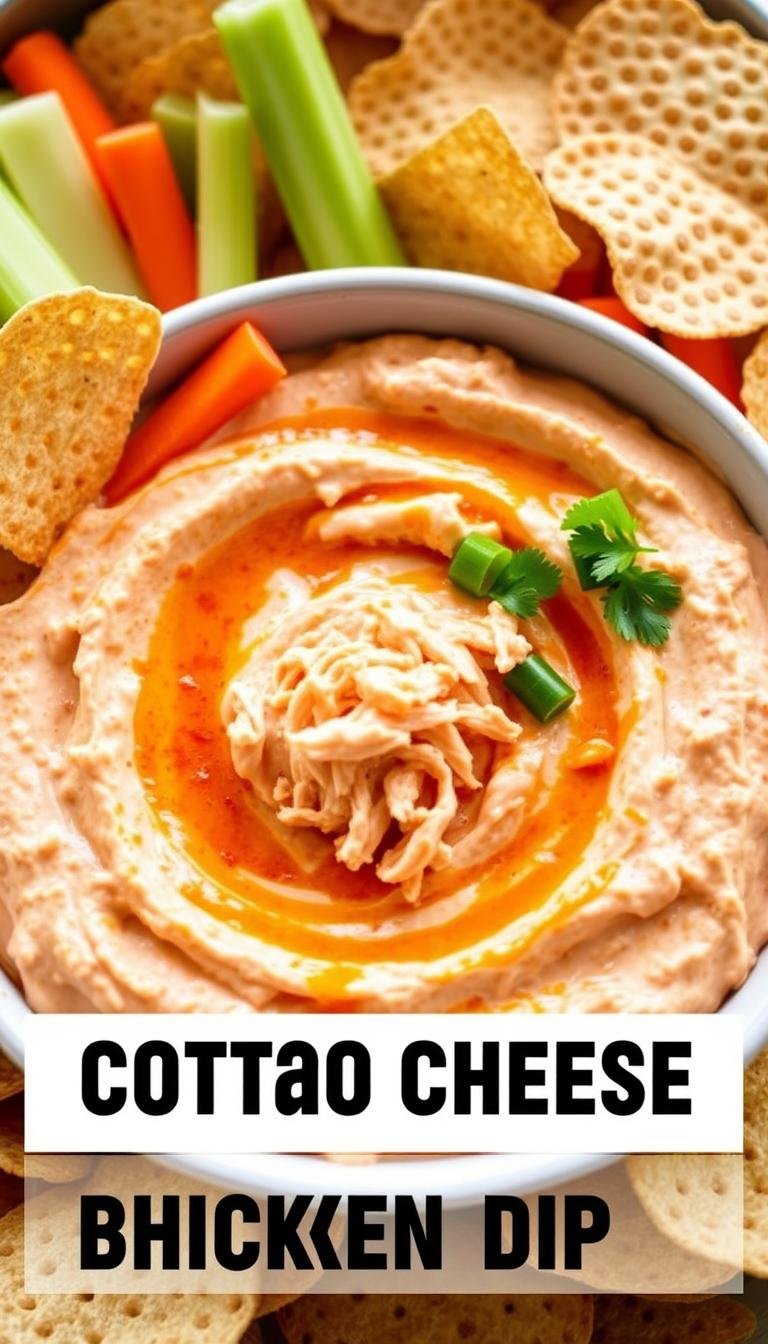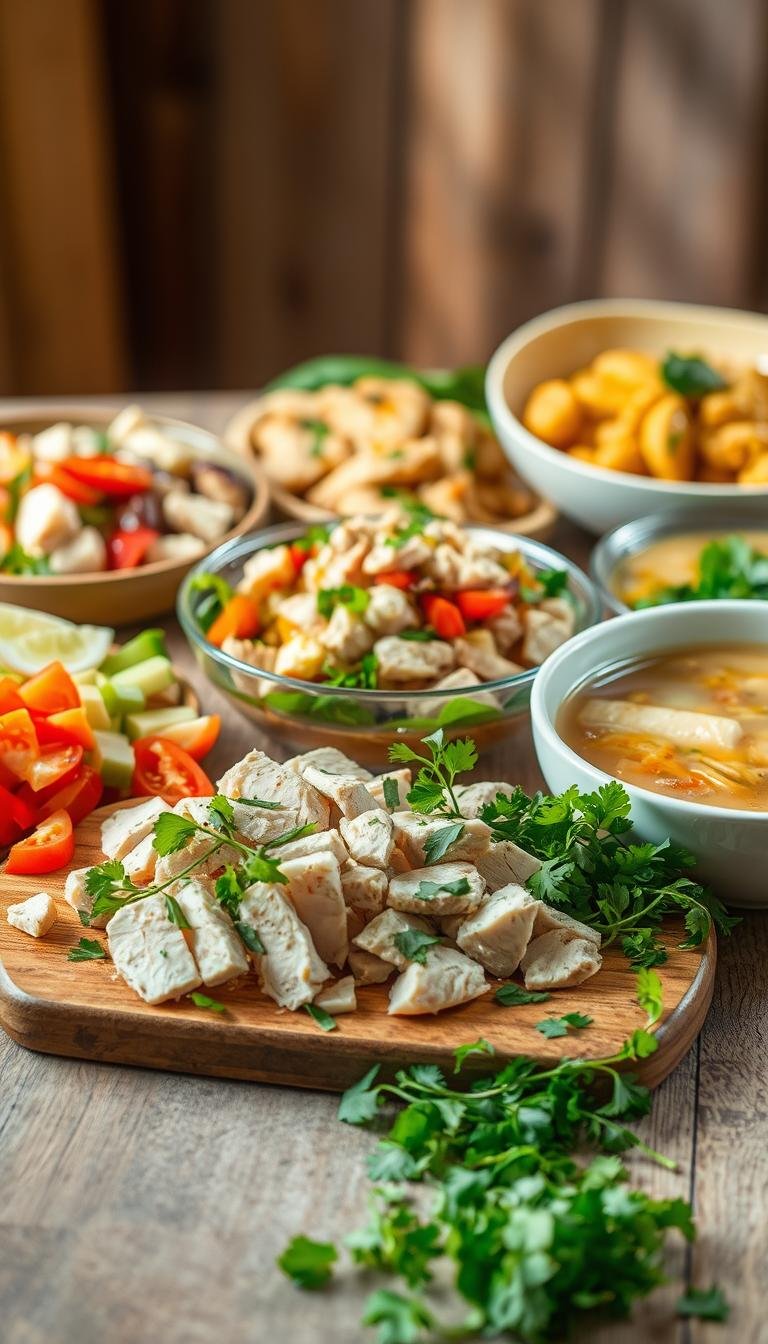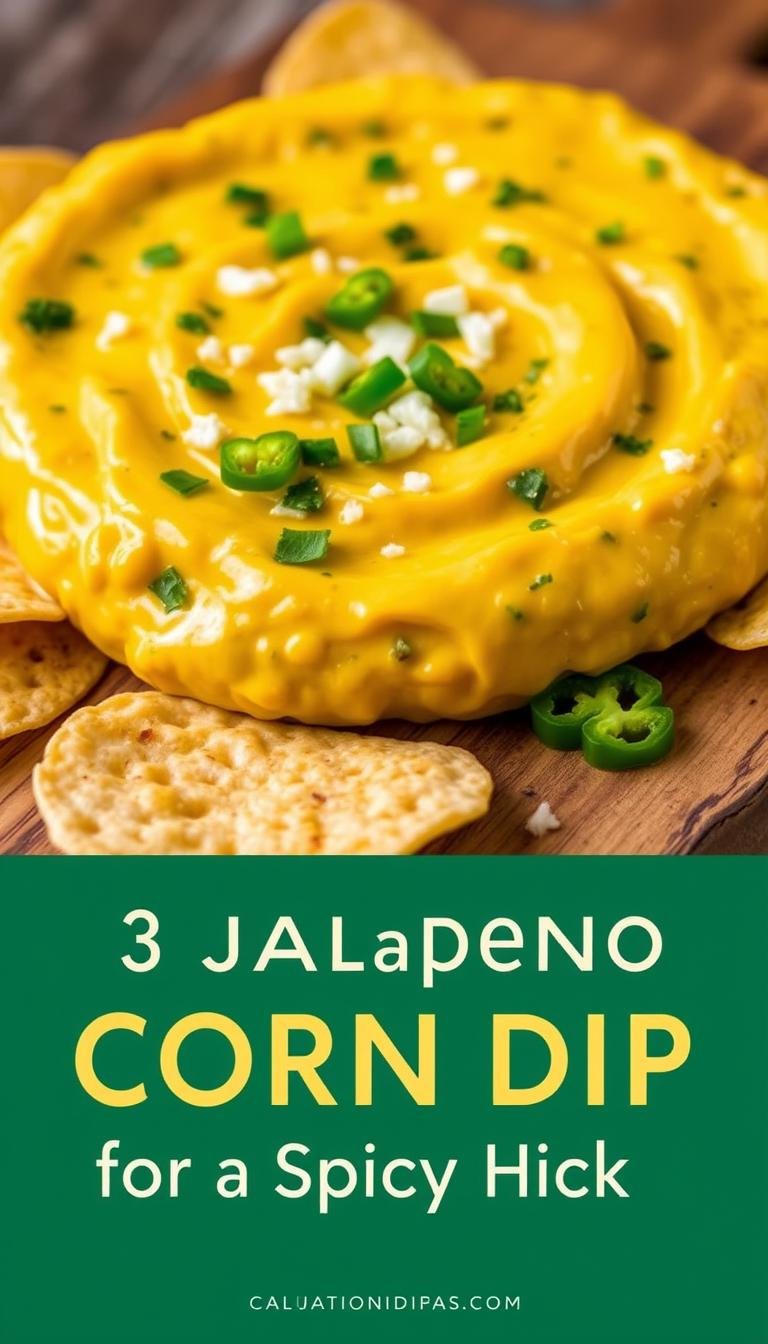3 Secret Tips for the Perfect Crispy Garlic Bread Every Time
Imagine sinking your teeth into a slice of crispy garlic bread, the crunch giving way to a flavorful, aromatic interior. It’s a culinary experience that elevates any meal, yet many home cooks struggle to achieve this perfect balance. The truth is, creating restaurant-quality garlic bread at home is simpler than you think, and it all comes down to a few expert techniques.
With the right approach, you can transform your homemade garlic bread from soggy and unappetizing to crispy and irresistible. Whether you’re serving a simple pasta dish or hosting a dinner party, mastering the art of garlic bread can make all the difference.
Key Takeaways
- Selecting the right bread is crucial for achieving crispiness.
- Proper butter preparation is key to flavorful garlic bread.
- The cooking method can make or break the texture of your garlic bread.
- Using the right temperature and baking time ensures a crispy exterior.
- Experimenting with different garlic flavors can enhance your garlic bread experience.
The Art and Science of Perfect Garlic Bread
Garlic bread, a seemingly simple culinary delight, requires a nuanced understanding of both art and science to achieve perfection. The process of creating exceptional garlic bread involves a delicate balance between culinary techniques and the scientific principles that govern the transformation of ingredients during preparation and cooking.
The science behind garlic bread begins with the bread itself. Different types of bread have varying gluten structures, which significantly affect the final texture of the garlic bread. For instance, bread with a higher gluten content tends to produce a chewier garlic bread, while lower gluten bread results in a crisper exterior and softer interior. Understanding the role of gluten is crucial in selecting the right bread for your garlic bread.
Gluten Structure in Different Bread Types
| Bread Type | Gluten Content | Resulting Texture |
|---|---|---|
| French Bread | High | Chewy |
| Italian Bread | Medium | Balanced Crispiness and Softness |
| Ciabatta | Low | Crispy Exterior, Soft Interior |
The chemistry of garlic and butter also plays a critical role. When garlic is heated, its flavor compounds are released, infusing the bread with its characteristic aroma and taste. The melting point of butter contributes to the browning and crispiness of the garlic bread. As butter melts, it helps to distribute heat evenly and promotes the Maillard reaction, a chemical reaction between amino acids and reducing sugars that gives browned foods their distinctive flavor.
Environmental factors such as humidity and kitchen temperature can significantly affect the outcome of your garlic bread. High humidity can lead to a soggy texture, while a dry environment can cause the bread to dry out. Understanding these factors allows cooks to make adjustments to achieve the perfect garlic bread.
By mastering both the artistic elements, such as presentation and flavor balance, and the scientific principles, including heat transfer and moisture control, home cooks can elevate their garlic bread to a truly exceptional level. This holistic understanding prepares cooks for the specific techniques and tips that follow, providing a solid foundation for achieving garlic bread perfection.
Understanding the Fundamentals of Garlic Bread
To truly appreciate garlic bread, one must understand its evolution. Garlic bread has become a beloved dish across various cultures, but its journey from a simple bread recipe to a culinary staple is particularly interesting.
The History and Evolution of Garlic Bread
Garlic bread’s history dates back to ancient times when the Romans used to top toasted bread with garlic, olive oil, and herbs. This early version, known as “bruschetta,” was a practical way to use stale bread. As culinary traditions evolved, so did garlic bread. Italian immigrants brought their versions to the United States, where it became a staple in Italian-American cuisine during the 20th century.
The evolution of garlic bread is a story of cultural exchange and adaptation. From its origins as a peasant food to its current status as a comfort food, garlic bread has undergone significant transformations. Understanding this history helps appreciate the various regional variations that have developed over time.
Essential Ingredients for Authentic Garlic Bread
Creating authentic garlic bread requires attention to the quality of its core ingredients. The ideal bread varieties for garlic bread are those with a good balance of crust and crumb, such as baguette or Italian bread. High-quality butter is essential for the garlic butter spread, as it directly impacts the flavor and texture.
Garlic selection is another crucial factor. Fresh garlic cloves provide the best flavor, and the method of preparation (mincing, crushing, or roasting) can significantly affect the final taste. Complementary herbs like parsley or oregano add depth to the dish. The table below summarizes the essential ingredients and their characteristics.
| Ingredient | Characteristics |
|---|---|
| Bread | Baguette or Italian bread with a good crust and crumb balance |
| Butter | High-quality, salted or unsalted |
| Garlic | Fresh cloves, minced, crushed, or roasted |
| Herbs | Parsley, oregano, or other complementary herbs |
Common Mistakes That Lead to Soggy Garlic Bread
One of the most common mistakes in making garlic bread is improper bread storage, which can lead to stale or moist bread that’s prone to sogginess. Incorrect butter application, such as using too much butter or applying it unevenly, can also result in a soggy texture.
Temperature misjudgments during baking can cause the bread to toast unevenly or burn. Timing issues, such as baking for too long or too short a time, affect the crispiness of the garlic bread. Understanding these pitfalls helps in avoiding them, ensuring a crispy and delicious final product.
3 Secret Tips for the Perfect Crispy Garlic Bread Every Time
Perfecting crispy garlic bread requires attention to detail in three critical areas. The journey to creating the ultimate garlic bread begins with understanding the fundamental elements that contribute to its perfection.
Secret Tip #1: The Optimal Bread Selection and Preparation
The foundation of great garlic bread starts with the right bread. The type of bread you choose significantly impacts the final texture and flavor.
Choosing the Right Bread Type for Maximum Crispiness
Different bread types offer varying levels of crispiness when baked. Baguette, ciabatta, sourdough, and Italian loaf are popular choices, each with unique characteristics.
| Bread Type | Crust Thickness | Crumb Density | Crispiness Level |
|---|---|---|---|
| Baguette | Thin | Airy | High |
| Ciabatta | Medium | Light | Medium-High |
| Sourdough | Thick | Dense | Medium |
| Italian Loaf | Medium-Thick | Moderate | Medium-High |
When selecting bread, consider the crust thickness, crumb density, and moisture content, as these factors affect the final crispiness.
Pre-toasting Techniques That Make a Difference
Pre-toasting is a crucial step that creates a moisture barrier, preventing sogginess. Various methods include oven, broiler, and grill pre-toasting.
Oven Pre-toasting: Preheat your oven to 375°F (190°C). Place the bread slices on a baking sheet and toast for 5-7 minutes, or until lightly browned.
The Perfect Slice Thickness for Ideal Texture
The thickness of your bread slices significantly affects the texture. Slices that are too thin may become too crispy, while those that are too thick may remain soft.
Ideal Thickness: Aim for slices between 1/2 to 3/4 inch (1.3 to 1.9 cm) thick for a balance between crispiness and softness.

Secret Tip #2: The Ultimate Garlic Butter Formula
The garlic butter is a crucial component that elevates garlic bread. Achieving the perfect balance is key.
The Ideal Butter-to-Garlic Ratio
Professional chefs often use a specific ratio of butter to garlic. A common ratio is 3:1 (three parts butter to one part garlic).
For a milder flavor, use less garlic, while more garlic can be used for a stronger taste.
Fresh vs. Roasted Garlic: Impact on Flavor and Texture
The method of garlic preparation affects both flavor and texture. Fresh garlic provides a pungent flavor, while roasted garlic offers a sweeter, nuttier taste.
Enhancing Flavor with Complementary Herbs and Spices
Adding herbs and spices can enhance the flavor profile. Classic combinations include Italian herbs like oregano and thyme.
Compound Butter Preparation and Storage Methods
Compound butter can be prepared in advance and stored. It’s essential to keep it refrigerated and bring it to room temperature before use.
Secret Tip #3: Mastering the Cooking Method and Timing
The final stage of preparing garlic bread involves cooking it to perfection. The cooking method and timing are critical.
Oven Temperature and Positioning Secrets
The oven temperature and rack positioning can significantly impact the outcome. Preheating the oven to the right temperature is crucial.
Optimal Temperature: For most bread types, a temperature between 375°F to 425°F (190°C to 220°C) is ideal.
The Two-Stage Cooking Approach for Perfect Crispiness
A two-stage cooking method involves baking covered and then uncovered. This technique helps achieve a crispy exterior and a soft interior.
| Cooking Stage | Temperature | Time | Result |
|---|---|---|---|
| Covered | 375°F (190°C) | 10-12 minutes | Soft Interior |
| Uncovered | 425°F (220°C) | 5-7 minutes | Crispy Exterior |
Alternative Cooking Methods: Broiler, Grill, and Air Fryer Techniques
Alternative cooking methods can achieve excellent results. Broiling, grilling, and using an air fryer offer different advantages.
Broiling: Watch closely as it can quickly go from perfectly toasted to burnt.
Visual and Tactile Cues for Perfect Doneness
Checking for doneness involves both visual and tactile cues. A perfectly cooked garlic bread should be golden brown and crispy on the outside.
Tactile Cue: Tap the bread gently; it should sound hollow.
Regional Variations of Crispy Garlic Bread
The versatility of garlic bread is evident in its numerous regional interpretations. As a beloved accompaniment to various cuisines, garlic bread has evolved differently across cultures, reflecting local tastes and traditions.

Italian-American Classic Preparations
Italian-American garlic bread emerged in mid-20th century restaurants and homes, characterized by the use of soft Italian loaves, generous butter application, and particular herb combinations. This style differs from authentic Italian preparations, developing its own unique identity. Regional variations within American Italian communities, such as in New York, Chicago, and San Francisco, show how local preferences and available ingredients shaped different interpretations of this classic.
Key characteristics of Italian-American garlic bread include:
- Soft Italian loaves as the base
- Generous application of garlic butter
- Use of herbs like parsley and oregano
- Regional twists based on local tastes
European Interpretations and Techniques
European countries have their own approaches to garlic-infused breads. French garlic baguettes, Spanish pan con ajo, and Mediterranean variations each have distinctive ingredients, preparation methods, and serving traditions. Understanding the historical and cultural contexts that influenced these variations provides insight into how garlic bread evolved differently across culinary traditions.
For instance, Spanish pan con ajo focuses on olive oil and raw garlic, creating a lighter, fresher flavor profile compared to the richer, butter-based Italian-American version.
Modern Culinary Innovations in Garlic Bread
Contemporary chefs are pushing garlic bread beyond tradition with fusion approaches, molecular gastronomy techniques, and artisanal bakery interpretations. Restaurants and chefs known for their creative takes on garlic bread are redefining the dish. Modern dietary trends and social media have also impacted the presentation and popularity of certain styles, inspiring readers to experiment with their own creative variations.
Some notable innovations include:
- Fusion flavors like truffle and parmesan
- Use of alternative breads, such as sourdough or ciabatta
- Incorporation of modern cooking techniques
- Artisanal presentations that elevate garlic bread to a gourmet level
“The art of garlic bread lies in its simplicity and the quality of its ingredients,” says Chef Giovanni Bianchi. “By innovating within these constraints, we can create something truly special.”
Elevating Your Garlic Bread Game: Advanced Techniques
To take your garlic bread to the next level, consider incorporating advanced techniques that enhance flavor and presentation. Mastering these techniques will not only impress your guests but also elevate your garlic bread from a simple accompaniment to a culinary highlight.
Infusing Additional Flavors Without Compromising Crispiness
Infusing additional flavors into your garlic bread can be achieved without sacrificing its crispy texture. Techniques such as oil infusions, dry spice blooming, and cheese incorporation can enhance the flavor profile. For instance, truffle oil can be infused into the garlic butter for a luxurious twist, while a blend of herbs de Provence can add a Mediterranean flair.
When incorporating cheese, it’s crucial to balance the amount to avoid sogginess. A mix of mozzarella for melt and parmesan for flavor provides a well-rounded taste. Layering flavors at different stages of preparation, such as adding fresh herbs just before baking, can also maintain the texture while enhancing the flavor.
| Flavor Component | Method of Infusion | Result |
|---|---|---|
| Truffle Oil | Infuse into garlic butter | Luxurious, earthy flavor |
| Herbs de Provence | Mix into garlic butter | Mediterranean flair |
| Mozzarella & Parmesan | Sprinkle before baking | Balanced melt and flavor |
Creating Restaurant-Quality Presentation
The presentation of garlic bread can significantly impact the dining experience. Artistic cutting patterns, such as a crisscross or a diagonal cut, can enhance visual appeal. Garnishing with fresh herbs or a sprinkle of parmesan cheese adds a pop of color and freshness.
Serving garlic bread on a wooden board or a rustic plate can add to the ambiance. Maintaining the temperature of the garlic bread is crucial; serving it hot out of the oven or reheated to the right crispiness is key. For social media sharing, styling the garlic bread with complementary dishes and using good lighting can make the presentation stand out.
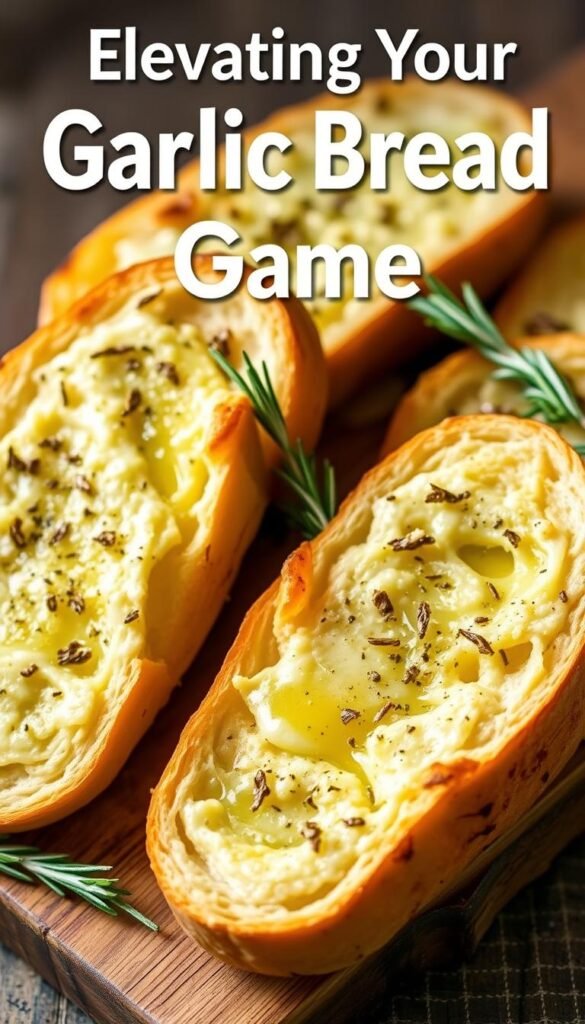
Make-Ahead and Freezing Strategies for Convenience
Preparing garlic bread components or complete assemblies in advance can be a significant convenience, especially for entertaining. Cooling the bread completely before wrapping it tightly in plastic wrap or aluminum foil is essential for maintaining freshness.
For long-term storage, flash freezing is an effective method. Placing the prepared garlic bread on a baking sheet to freeze until solid, then transferring it to a freezer-safe bag, prevents the bread from sticking together. Reheating instructions vary based on the preparation stage; for instance, frozen garlic bread may require a few extra minutes in the oven to achieve the desired crispiness.
By mastering these advanced techniques, you can enjoy gourmet garlic bread that’s not only delicious but also visually appealing and convenient to prepare.
Pairing Your Perfect Garlic Bread: Complementary Dishes
Garlic bread, when paired thoughtfully with other culinary delights, can transform a simple meal into a memorable dining experience. The key to creating such experiences lies in understanding how to pair garlic bread with a variety of dishes effectively.
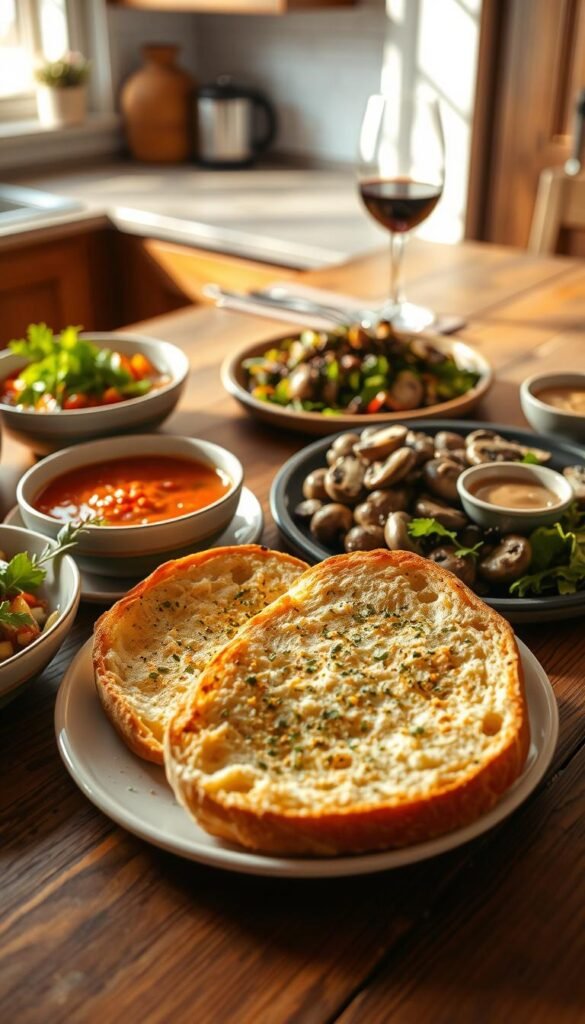
Classic Italian Pairings That Never Fail
Italian cuisine offers a rich tapestry of dishes that complement garlic bread beautifully. Traditional pairings include various pasta preparations, such as spaghetti Bolognese or fettuccine Alfredo, where the garlic bread serves as a perfect accompaniment for sopping up savory sauces. Soups like minestrone or pasta e fagioli also pair well, as the bread adds a satisfying crunch to the meal. Classic meat dishes, including chicken parmesan or lasagna, are elevated by the presence of garlic bread, which helps to round out the flavors of the meal.
Recommended Pairings: Spaghetti Carbonara, Bruschetta, Italian Wedding Soup
Modern Fusion Combinations to Try
Beyond traditional Italian cuisine, garlic bread can be paired with a variety of international dishes to create innovative fusion meals. For instance, Mediterranean cuisine offers opportunities to pair garlic bread with hummus, tabbouleh, or grilled lamb skewers. In Asian-inspired meals, garlic bread can complement dishes like Korean BBQ or Thai curries, adding a Western twist to these flavors. Latin American cuisine also benefits from garlic bread, particularly when served alongside dishes like empanadas or chili con carne.
Exploring Fusion: Garlic bread with a Mediterranean twist, topped with feta and olives, pairs well with Greek salad or spanakopita.
Creating a Complete Meal Around Your Garlic Bread
To make garlic bread the centerpiece of a meal, consider pairing it with a selection of complementary dishes. A well-rounded meal might include a protein component, such as grilled chicken or roasted vegetables, alongside the garlic bread. Beverage pairings, like a glass of Chianti or a refreshing salad, can further enhance the dining experience. For entertaining, a garlic bread-centered gathering can be a unique and enjoyable theme, allowing guests to customize their meals with various toppings or accompaniments.
Menu Suggestion: Garlic bread with a variety of dips (marinara, spinach and artichoke, etc.), accompanied by a mixed greens salad and a selection of Italian cheeses.
Troubleshooting Common Garlic Bread Problems
Troubleshooting is an essential skill for achieving the perfect garlic bread every time. Even with the best techniques and ingredients, things can go wrong. This section will help you identify and fix common issues that may arise when making garlic bread.
Fixing Overly Dry or Burnt Garlic Bread
Overly dry or burnt garlic bread can be disappointing, but there are ways to rescue it. The first step is to identify the cause of the problem. Oven hot spots, incorrect timing, and bread selection issues are common culprits.
To rescue dry or burnt garlic bread, try the following:
- Selective trimming: Remove burnt edges or overly dry parts.
- Moisture reintroduction: Brush the bread with olive oil or a garlic butter mixture.
- Repurposing: Use the bread to make croutons or breadcrumbs.
To prevent dry or burnt garlic bread in the future, consider the following:
| Prevention Method | Description |
|---|---|
| Equipment adjustment | Ensure your oven is at the correct temperature. |
| Visual monitoring | Keep an eye on the bread while it’s baking. |
| Timing modification | Adjust baking time based on your oven’s performance. |
Remedies for Undercooked or Soggy Centers
Undercooked or soggy centers can be frustrating, especially when the outside is perfectly crisp. To diagnose the issue, consider the physics of moisture migration during cooking.
“The key to avoiding soggy centers is understanding how moisture moves through the bread during cooking.” – Expert Baker
To rescue undercooked garlic bread, try targeted reheating methods that won’t compromise the exterior. For future attempts, adjust your preparation and cooking techniques to prevent soggy centers.
Balancing Garlic Intensity
Garlic intensity can be unpredictable, and achieving the perfect balance is crucial. To adjust garlic flavor, consider the preparation method and cooking time.
For overpowering garlic flavor, try:
- Adding complementary ingredients like cheese or herbs.
- Serving the garlic bread with a mild sauce or dip.
For too-subtle garlic flavor, try:
- Adding more garlic to the butter mixture.
- Sprinkling garlic powder on top of the bread before baking.
Rescuing and Repurposing Less-Than-Perfect Results
Not every garlic bread turns out perfectly, but that doesn’t mean it has to go to waste. Consider repurposing ideas like:
| Repurposing Idea | Description |
|---|---|
| Garlic bread croutons | Cut the bread into small pieces and bake until crispy. |
| Breadcrumbs for pasta toppings | Blend the bread into crumbs and season with herbs. |
| Bread pudding base | Tear the bread into pieces and mix with eggs and cheese. |
Adapting Your Perfect Garlic Bread for Dietary Restrictions
Dietary restrictions don’t have to mean giving up on the pleasure of crispy garlic bread. With a few simple adaptations, you can enjoy this beloved treat regardless of your dietary needs.
Gluten-Free Alternatives That Maintain Crispiness
Creating gluten-free garlic bread that rivals its traditional counterpart requires careful selection of ingredients and techniques. Gluten-free bread can be more challenging to work with due to its different texture and composition. Look for gluten-free bread made from ingredients like rice flour, almond flour, or coconut flour, which tend to perform better when toasted or baked.
| Gluten-Free Bread Type | Crispiness Level | Recommended Use |
|---|---|---|
| Rice Flour Bread | High | Ideal for toasting |
| Almond Flour Bread | Medium | Good for baking |
| Coconut Flour Bread | Low | Best for sandwiches |
When using gluten-free bread, it’s essential to adjust your garlic butter ratio and cooking time. A higher ratio of butter to bread can help achieve the desired crispiness. Additionally, baking at a slightly higher temperature can enhance browning and texture.
Dairy-Free and Vegan Adaptations
For those following a dairy-free or vegan diet, substituting traditional butter with plant-based alternatives is key. Vegan butter and coconut oil are excellent options that can provide a rich flavor and crispy texture when used correctly.
“Using high-quality vegan butter can make all the difference in achieving that perfect garlic bread crispiness.” – Expert Chef
When using vegan butter or oil, ensure that it’s spread evenly across the bread to prevent dry spots. You can also enhance the flavor with nutritional yeast, which provides a cheesy, nutty taste without the dairy.
Lower-Calorie Options Without Sacrificing Flavor
Reducing the calorie count of garlic bread without losing its flavor involves a few strategic adjustments. Start by using less butter or switching to a lower-calorie spread. You can also opt for whole grain bread, which not only reduces calories but also adds nutritional value.
- Use a mixture of butter and olive oil for a lighter coating.
- Choose whole grain or whole wheat bread for added fiber.
- Control portion sizes to manage calorie intake.
By implementing these strategies, you can enjoy garlic bread that fits within your dietary goals while still satisfying your cravings.
Conclusion: Mastering the Art of Crispy Garlic Bread
Creating the perfect garlic bread is a culinary journey that combines technical skill with creative intuition. By mastering the three secret tips – optimal bread selection and preparation, the ultimate garlic butter formula, and mastering cooking methods and timing – you’ll be well on your way to making perfect garlic bread every time.
These elements work together as a system, and understanding how to balance them is key to achieving that perfect crispy crust and flavorful interior. As you continue to practice and experiment with different variations, you’ll develop the skills to create homemade garlic bread that rivals your favorite restaurants.
Whether you’re serving it alongside a hearty Italian meal or using it as a base for creative fusion dishes, perfect garlic bread is sure to become a staple in your kitchen. So, don’t be afraid to try new recipes and adaptations – with these tips, you’re ready to start mastering garlic bread and enjoying the satisfaction of creating delicious, crispy garlic bread for yourself and your loved ones.

